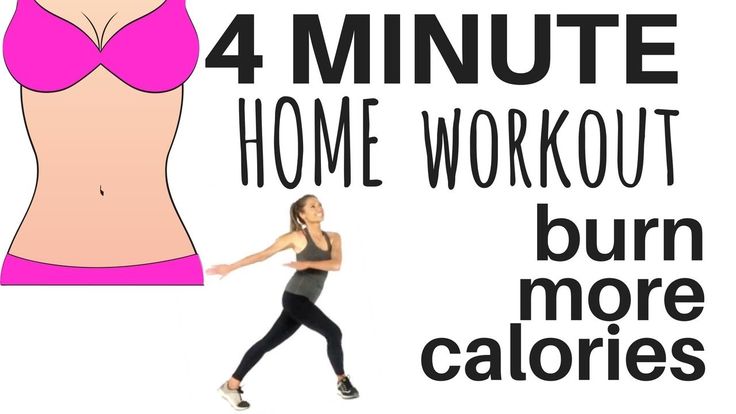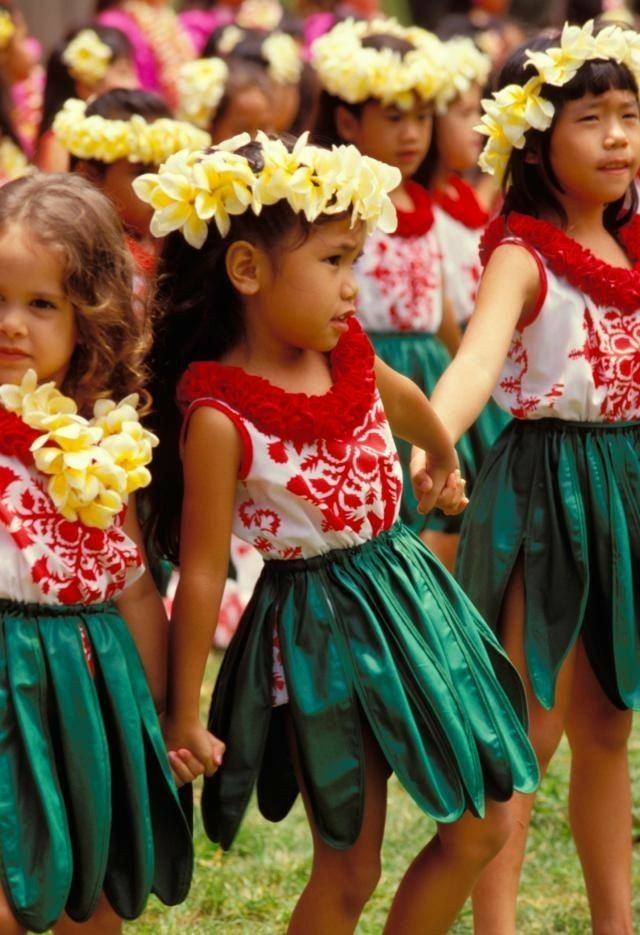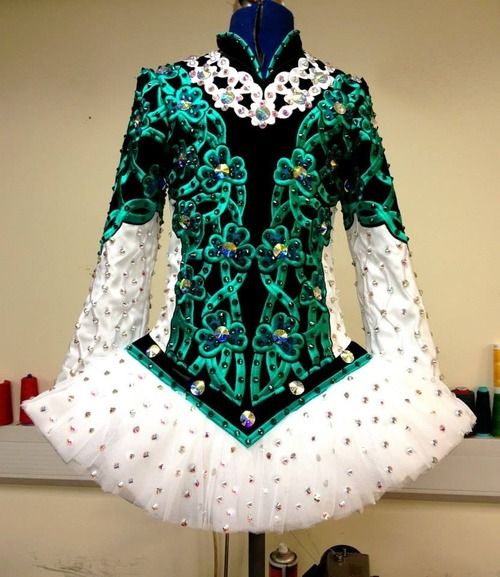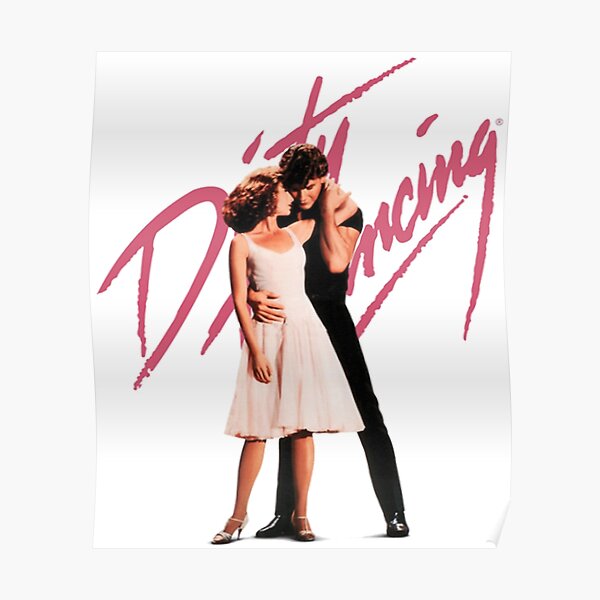How to dance the brazilian samba
Learn Basic Samba Steps
Samba is a lively dance of Brazilian origin. It's a popular party dance, characterized by simple forward and backward steps and rhythmic hip movements.
- Basic steps
- Instructions & Diagrams
- Video
- Recommended Video Lessons »
Quick intro
Samba is the national dance of Brazil, some say the spirit and soul of the country. In Brazil, it is a solo dance, performed at street festivals and carnivals. Ballroom samba, on the other hand, is a partner dance that has little in common with the original form.
Although in Brazil samba remains a solo form, in other countries it evolved into a partner dance and was standardized as a ballroom dance in 1956. Today it's one of the most common Latin American dances.
Many versions of samba exist - Carnivale, Mesemba, Carioca, Batucado, Conga, just to name a few. Here we'll focus on the ballroom version, quite popular in North America and Europe, with both the younger and older generations.
Basic steps
Ballroom samba is usually danced to music written in 2/4 time, meaning there are two beats in each measure. The basic box step consist of three steps. This means that three steps are performed in two beats of music.
The basic rhythm is 1 & 2, 3 & 4, 5 & 6, 7 & 8, commonly described as "one, uh two", "three, uh four", and so on. Usually you count 8 beats before resuming the count.
The most characteristic element of samba is probably the so called samba bounce, which is achieved through rhythmic bending and straightening of the knees. See the video below for detailed explanation.
Instructions & Diagrams:
Ballroom samba is danced in a closed position, with partners slightly apart. The lady's right hand and the man's left hand are held about the lady's eye level. The man's right hand is placed on the lady's shoulder blade. The lady's left hand is placed flat on the man's back.
Basic step is a very simple box step. Remember, the rhythm is 1-uh-2, 3-uh-4...
Basic Steps for Men
- Step forward with your left foot (count 1)
- Move your right foot to your left foot (uh)
- Left foot in place, weight shifts to it (count 2)
- Step backward with your right foot (count 3)
- Move your left foot to your right foot (uh)
- Right foot in place, weight shifts to it (count 4)
Basic Steps for Ladies
- Step backward with your right foot (count 1)
- Move your left foot to your right foot (uh)
- Right foot in place, weight shifts to it (count 2)
- Step forward with your left foot (count 3)
- Move your right foot to your left foot (uh)
- Left foot in place, weight shifts to it (count 4)
Video
In this video Leon and Kim will show you the basic steps in addition to a whisk action, which is an extention of the basic movement to the side. You will also learn the principles of bounce action, something that is absolutely crucial to understand:
You will also learn the principles of bounce action, something that is absolutely crucial to understand:
more videos »
If you're interested in more video lessons like this one, take a look at our recommendations »
Samba Dance Brazil - Brazilian Samba
The Samba dance Brazil style is a tradition, a custom, the heart and soul of the music and dance throughout the country. It's a Brazilian dance with roots going as far back as the 19th century.
Originally the Samba was a solo dance, but over the years there have been some partner Samba dances that have evolved in different areas of Brazil.
The popular Carnival celebration in Rio de Janeiro is known for the dancing of the Samba through the streets. It's a very quick dance with a lot of fun rhythm that naturally makes your feet and body want to move.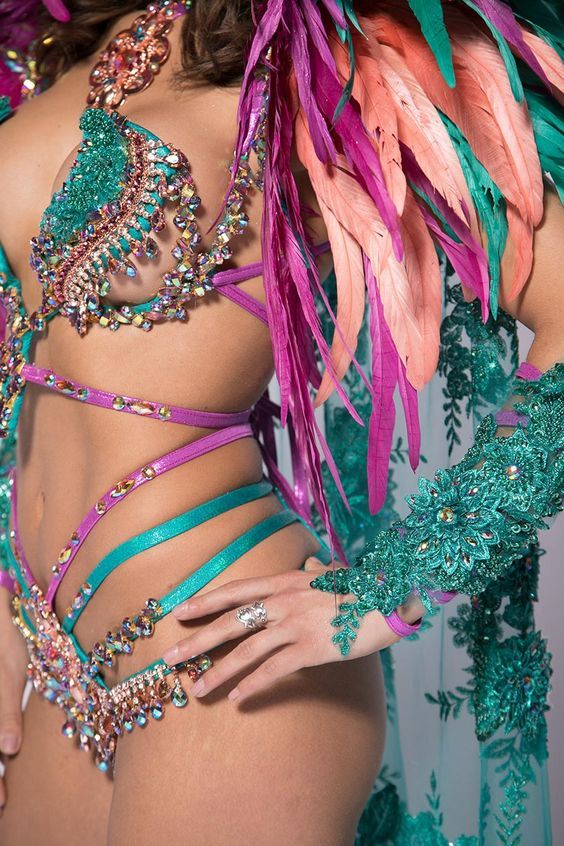 Dancers who are proficient at dancing the Samba are called Sambistas.
Dancers who are proficient at dancing the Samba are called Sambistas.
Types of Samba Dance Brazil Style
- Samba de Gafieira - came onto the dance scene in popular Rio dance clubs called Gafieira, sometime around the 1940s. It's a combination of Maxixe and Polka elements along with some movements taken from the Argentine Tango. It's the most difficult style of Samba because it includes incredibly athletic movements. The steps are based on a short-short-long rhythm.
- Samba no pe - a basic Samba danced by a single person. The rhythm is a basic 2/4 time, but with three steps included in each measure of music. The body is straight and the steps are done with one leg at a time slightly bent. Tempo for this style of Samba is slow or fast.
- Samba Pagode - a more intimate Samba dance Brazil style - it's similar to the Samba de Gafieira, but it is slower moving with fewer athletic movements. It was first seen danced in the city of Sao Paulo.
- Samba Reggae - this Samba dance version originated in Bahia.
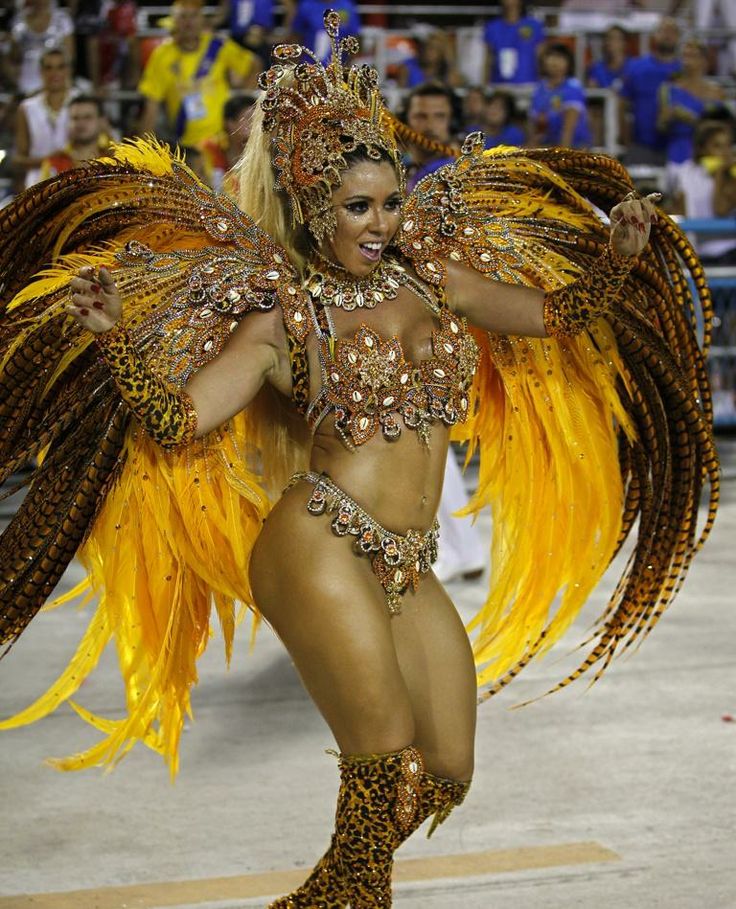 It's danced to the rhythmic beats of Samba drums and is considered the most popular Samba style dance following Samba no pe.
It's danced to the rhythmic beats of Samba drums and is considered the most popular Samba style dance following Samba no pe. - Samba de roda - danced to an orchestra rather than drums and is reminiscent of the capoeira, a dance that is traditionally associated with the ancient Afro-Brazilian capoeira dance. Clapping and singing too accompany this Samba dance.
- Samba Axe - solo version of Samba dance in Brazil that combines aerobic movements and the steps of the Samba no pe together in a specifically choreographed dance. It's a very energetic dance and tends to create a very excited and charged atmosphere.
- Samba rock - most often seen in Sao Paulo Latin nightclubs - a unique combination of different dance styles including Zouk-Lambada, Samba de Gafieira, Cuban salsa, and forro.
About Samba Dance
Rapid steps coming down on the quarter beats of the music along with a sensual rocking and swaying motion of the people dancing the Samba are the two distinctive characteristics of the Samba dance.
There is also a special movement called the Samba bounce action that is associated only with the Samba. It takes quite a bit of practice to master this step and make it appear effortless. It's a dance step that appears to originate through the knees and ankles and move the body effortlessly, and is the signature move of the Samba dance.
The steps attributed to the Samba include:
- The Samba Strut
- Bota Fogos
- Samba Side Steps
- Voltas
- Kick Change
These basic footwork moves are centered on the three-step move that includes a knee lift and alternating feet moving in a fast-fast-slow rhythm. Sambistas make the moves appear effortless, as if their feet are simply floating across the floor. It's really something to see!
The end of the Samba dance Brazil style is signified by the dancers tossing their heads back dramatically and then putting their arms straight out from both sides of the body. That's how you know the Samba has finished!
Why is Samba So Important in Brazil?
The Samba dance originated in Brazil, so it has been part of their culture for many years.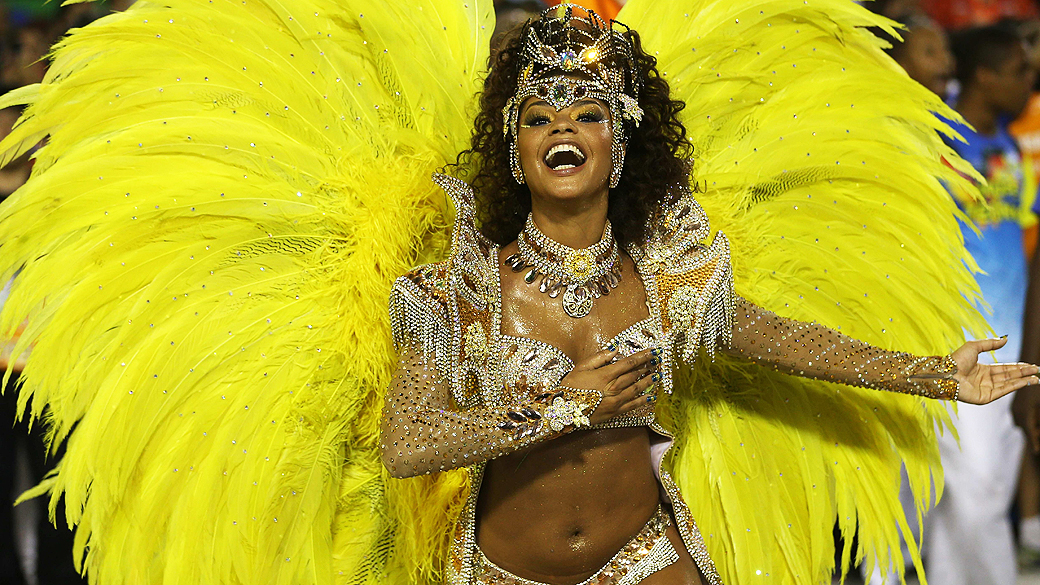 The Carnival celebrates the Samba each year, but even throughout the year, you can find the Samba danced in nightclubs, streets, and in backyards. The dance and the music are just a natural part of the Brazilian lifestyle and culture because it crosses the classes and it brings people together.
The Carnival celebrates the Samba each year, but even throughout the year, you can find the Samba danced in nightclubs, streets, and in backyards. The dance and the music are just a natural part of the Brazilian lifestyle and culture because it crosses the classes and it brings people together.
It is said that Samba connects everyone in Brazil because the poor and rich alike dance the Samba. Some people believe that Brazilian Samba is more important and more ingrained into Brazilian culture than even soccer!
Brazilian dance Samba
There is a version that the movements that later formed the basis of samba were invented by black slaves in shackles - it is possible to dance samba literally at one point, without leaving the spot. Samba is an individual or group dance, so it does not imply a partner. Costume for carnival samba: bikini, headdress with ostrich feathers and shoes or boots on a high platform in gold or silver color with rhinestones.
The Brazilian Samba is a very dynamic dance.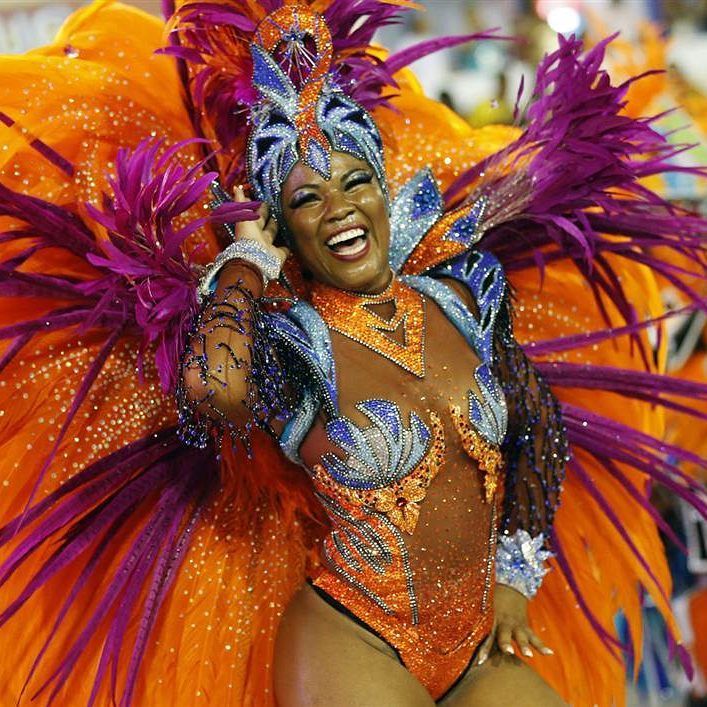 If we talk about physical activity, then it should be noted that during the performance of Samba the following happens:
If we talk about physical activity, then it should be noted that during the performance of Samba the following happens:
- maximum aerobic exercise;
- participation of most muscle groups;
- training of the vestibular apparatus;
- development of flexibility, coordination of movements, sexuality;
- increased muscle tone, general mood;
- increase self-esteem.
Nothing can compare with a woman's confidence in her irresistibility, seductiveness, which grows as you practice Brazilian samba!
Submit your application Schedule
Perhaps you one click away from a dream...
Why have so many already chosen us?
OVER 40
dance and fitness destinations
Dance directions
for all age groups
We have been working for
More than 10 years
within walking distance
from the metro
Feedback from our students
Select branch*
Select Myasnitskaya
Age category*
SelectFor childrenFor adultsFor the older generation
Lesson type*
Select Group LessonPrivate Lesson
Your last name*
Name*
Telephone*
Email*
Select Date
Your name Your last name
Your phone number Your email
Select branch*
Select Myasnitskaya
Age category*
SelectFor childrenFor adultsFor the older generation
Your last name*
Name*
Telephone*
Email*
Thanks for choosing us!
Application processing time from 10:00 to 18:00.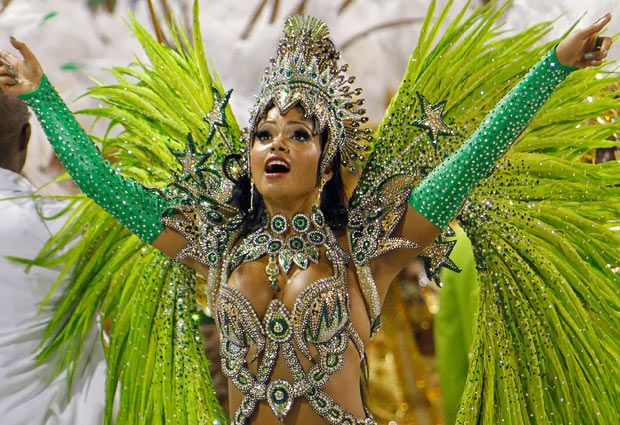
Before 18:00 the next day, we will contact you to agree on the date and time of your visit.
An error occurred while submitting the request. Please try submitting the application again.
If the error persists, please contact us via email [email protected]
Incendiary dance - Brazilian Samba, features, history and benefits of dance
When we mention the Brazilian Samba dance, in our imagination, images of a festive carnival on the streets of Rio de Janeiro immediately pop up with mobile platforms and girls dancing an incendiary dance in rhinestones and feathers. Their harmonious, rhythmic and at the same time light movements charge with positive and cause delight. This magical spectacle delights and takes viewers to another world filled with bright colors and emotions, where there is nothing else around except carnival and Samba.
Distinctive features of Samba
In the modern world, Latin American dances are very popular, among which the Brazilian Samba stands out.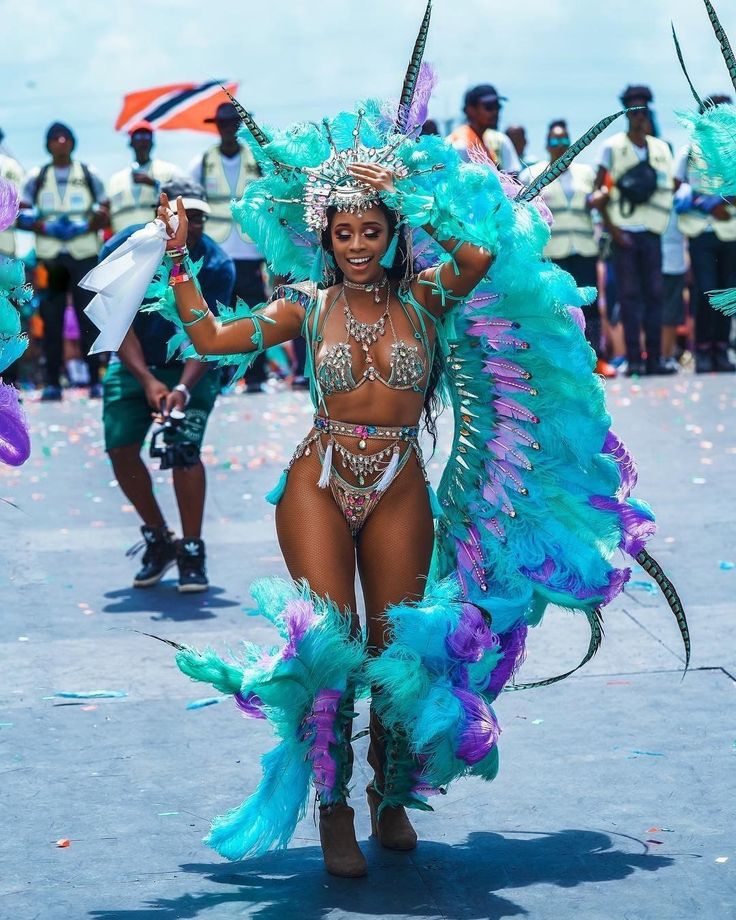 This is one of the few directions that is performed during carnival processions. Moving with the whole procession in high heels, girls dressed in bikinis with a scattering of rhinestones and heads adorned with ostrich feathers rhythmically outline the movements of the hips and attract the eye.
This is one of the few directions that is performed during carnival processions. Moving with the whole procession in high heels, girls dressed in bikinis with a scattering of rhinestones and heads adorned with ostrich feathers rhythmically outline the movements of the hips and attract the eye.
Thanks to this, the Brazilian Samba is a worthy competitor to modern frank dances. This direction will be performed not only during the procession, but also in the dance hall. Do not forget that Samba is an individual dance, but in the modern ballroom direction it is performed with a partner. The basis of Samba is flirting, a drop of passion and flirtatious movements aimed at attracting attention and maintaining mood.
In order to understand the essence of Samba, it is worth plunging into its history.
History of the Brazilian Samba
African aborigines before their enslavement performed this dance with their navels touching. But the European conquerors considered this method of merging in the dance too vulgar and made their own adjustments to it. So the social character of this dance direction was acquired. At the beginning of the 20th century, the Brazilian Samba grew in popularity, and the dance began to be performed at Brazilian carnivals. But what are the latter?
So the social character of this dance direction was acquired. At the beginning of the 20th century, the Brazilian Samba grew in popularity, and the dance began to be performed at Brazilian carnivals. But what are the latter?
Although the carnival originated in the tropics, due to the increased interest it is now held in many cities of northern latitudes. A full-fledged carnival will be considered if all its participants have a grandiose mobile platform, experience in these events and a group of girls performing incendiary Brazilian Samba.
Benefits of Samba
Samba is a relaxed and energetic dance formed by the fusion of the dances of African slaves and European conquerors. But what benefit does it give to the girl who performs it? During the performance of this dance, almost all muscle groups are involved, in addition to the total cardio load, flexibility and sexuality are developed. Accordingly, the girl's self-esteem and self-confidence increase. There was an erroneous opinion that it is difficult to learn how to dance the Brazilian samba.
